Design of a 2 m Primary Mirror Assembly Considering Fatigue Characteristics
Abstract
:1. Introduction
2. Mirror Assembly Design
2.1. Design of Mirror and Rigid Connectors
2.2. Design of Flexible Supports
2.3. Establishment of Flexible Structure Analysis Mode
3. Installation Position Optimization
3.1. Neutral Plane Theory
3.2. Static Analysis of Mirror Assembly
4. Dynamic Analysis of Three Flexible Supports
4.1. Modal Analysis
4.2. Strength Analysis
5. Analysis of Fatigue Life
5.1. Analysis of Vibration Fatigue
5.2. Analysis of Thermal–Mechanical Coupling Fatigue
5.3. Analysis of Abrasion Fatigue
6. Environmental Tests
6.1. Vibration Test
6.2. Temperature Test
7. Conclusions
Author Contributions
Funding
Institutional Review Board Statement
Informed Consent Statement
Data Availability Statement
Conflicts of Interest
References
- Wang, F.G.; Qiao, B.; Zhang, J.X. Flexible passive support system for 2 m SiC reflective mirror. Opt. Precis. Eng. 2017, 25, 2591–2598. [Google Scholar] [CrossRef]
- Zeng, Y.Q.; Fu, D.; Sun, J. Summary of support structure patterns of large mirror for space remote sensor. Spacecr. Recov. Remote 2006, 27, 18–22. [Google Scholar]
- Chen, S.H.; Nie, Y.Q.; Meng, G.W. Mechanics of Materials; Jilin Science and Technology Press: Changchun, China, 2000. [Google Scholar]
- Frédéric, K.; David, D. Vibration fatigue and simulation of damage on shaker table tests: The influence of clipping the random drive signal. Procedia Eng. 2013, 66, 549–564. [Google Scholar]
- Xu, T.Z.; Guan, Y.J. Random vibration fatigue analysis for mirror component of space camera. Opt. Technol. 2013, 39, 549–552. [Google Scholar]
- Yu, F.; Wu, Q.W.; Wang, B.-S.; Zou, Y.; Qu, L.-X.; Huang, T.; Zheng, F. Application of vibration fatigue life analysis to design of primary mirror supporting structure. Chin. J. Opt. Appl. Opt. 2009, 2, 495–501. [Google Scholar]
- Yoder, P.; Vukobratovich, D. Opto-Mechanical Systems Design; CRC Press: Norwalk, CT, USA; Tucson, AZ, USA, 2015. [Google Scholar]
- Kärcher, H.J.; Eisenträger, P.; Süss, M. Mechanical principles of large mirror supports. SPIE 2010, 7733, 966–977. [Google Scholar]
- Shao, M.; Zhang, L.; Jia, X. Optimization Design of the Spaceborne Connecting Structure for a Lightweight Space Camera. Appl. Sci. 2020, 10, 8249. [Google Scholar] [CrossRef]
- Jacob, J.W. Spacecraft Structures; Springer: Amsterdam, The Netherlands, 2008. [Google Scholar]
- Merklein, M.; Lechler, J. Investigation of the thermo-mechanical properties of hot stamping steels. J. Mater. Process. Technol. 2006, 177, 452–455. [Google Scholar] [CrossRef]
- Jia, X.Z.; Wang, Z.; Ran, L.Y. Fatigue failure analysis of titanium alloy pressure vessel by thermo mechanical coupling simulation. Ordnance Mater. Sci. Eng. 2020, 43, 122–125. [Google Scholar]
- Nicholas, T.; Hutson, A.; John, R.; Olson, S. A fracture mechanics methodology assessment for fretting fatigue. Int. J. Fatigue 2003, 25, 1069–1077. [Google Scholar] [CrossRef]

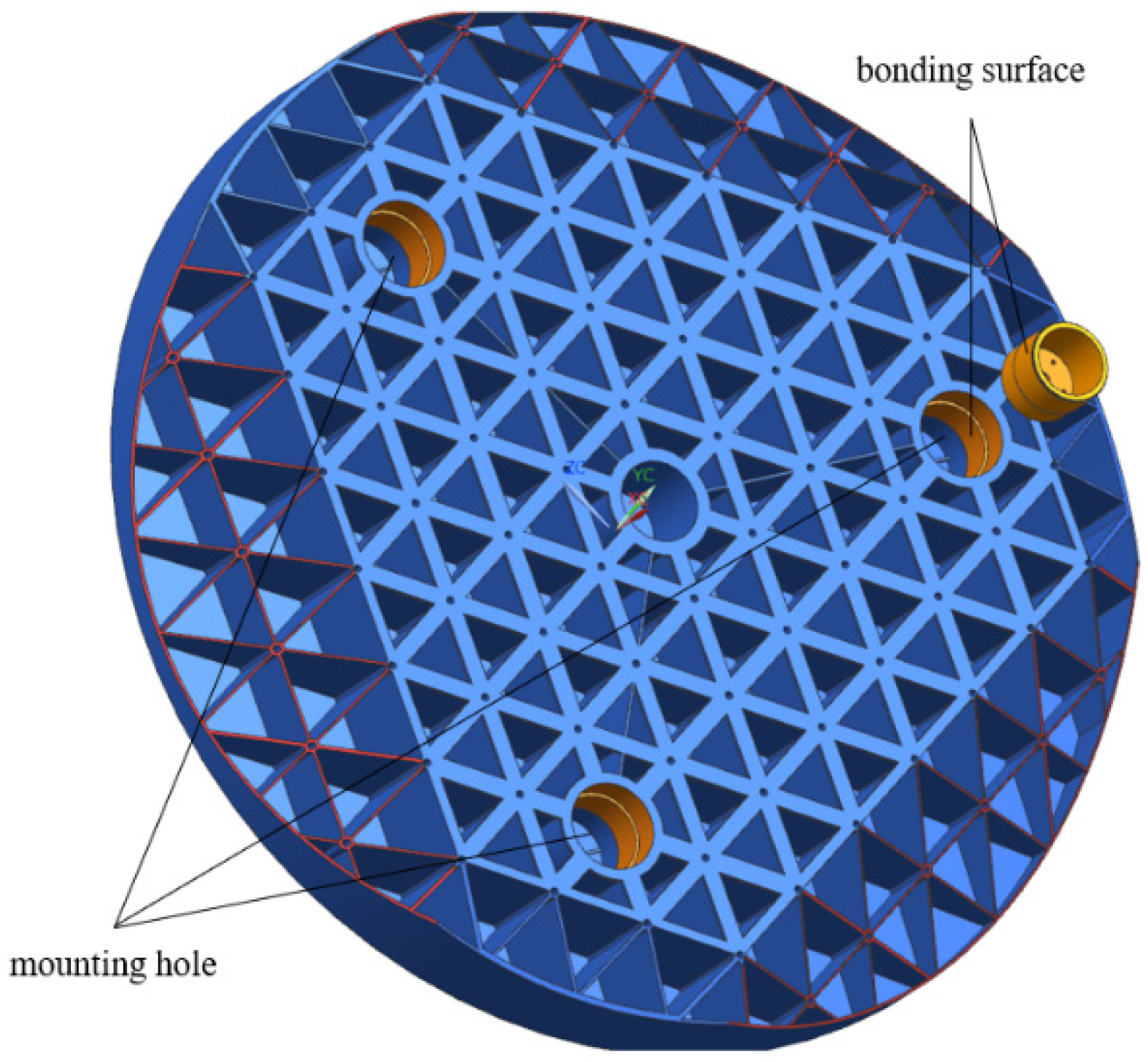
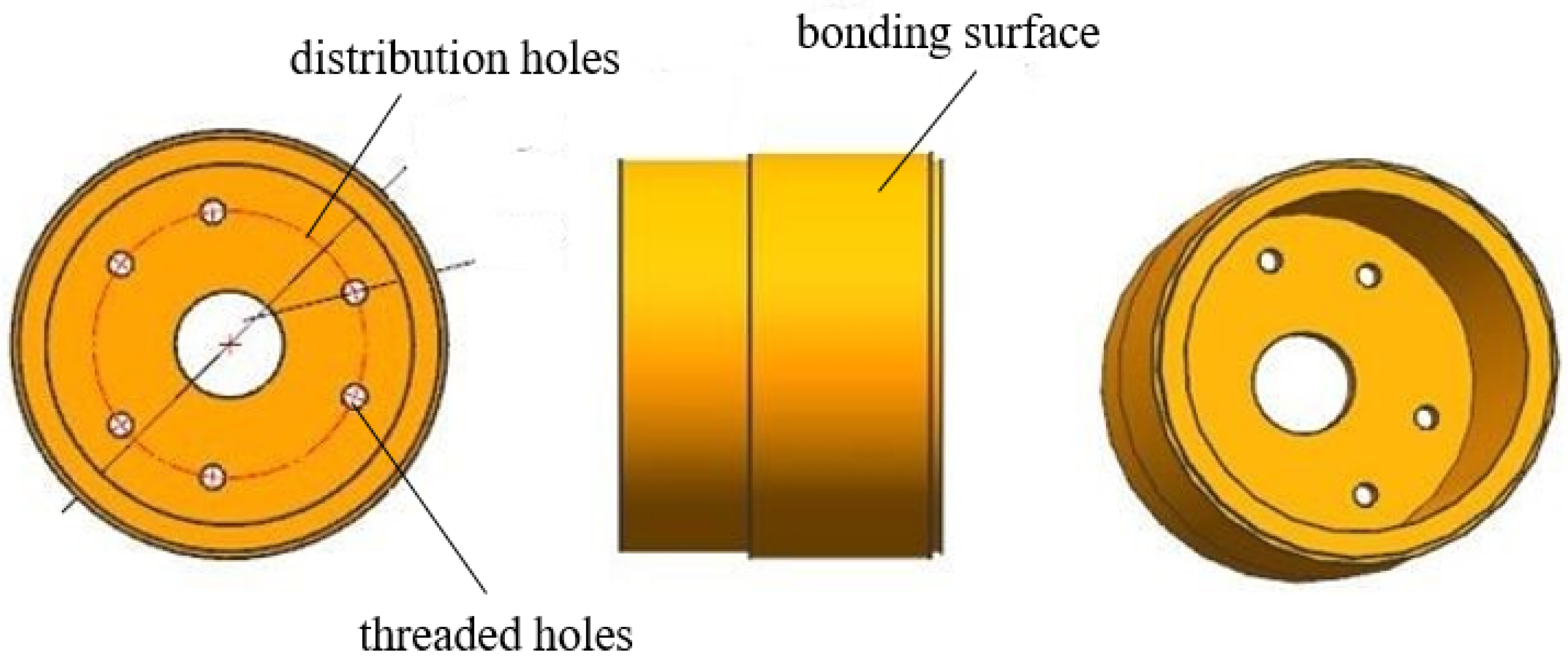
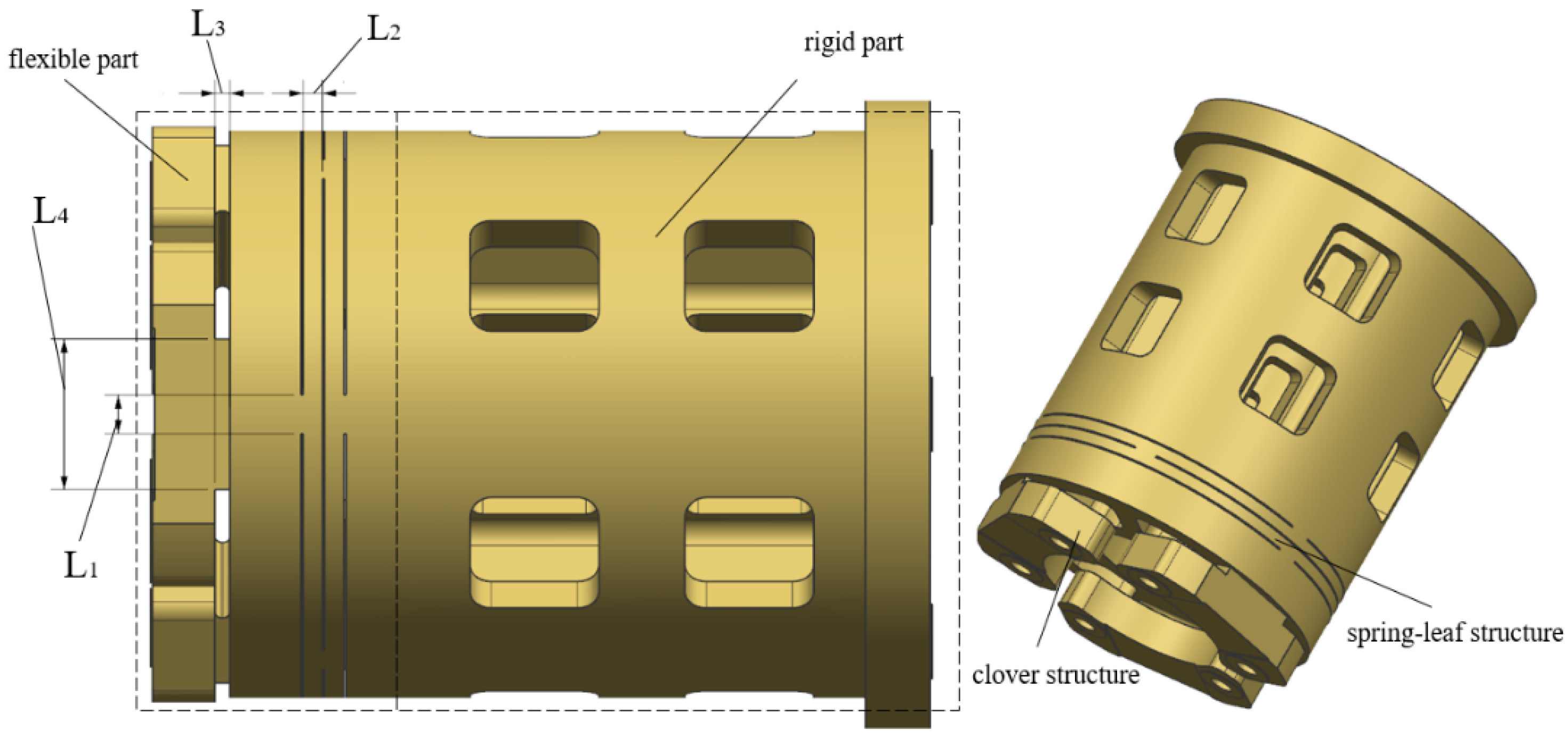



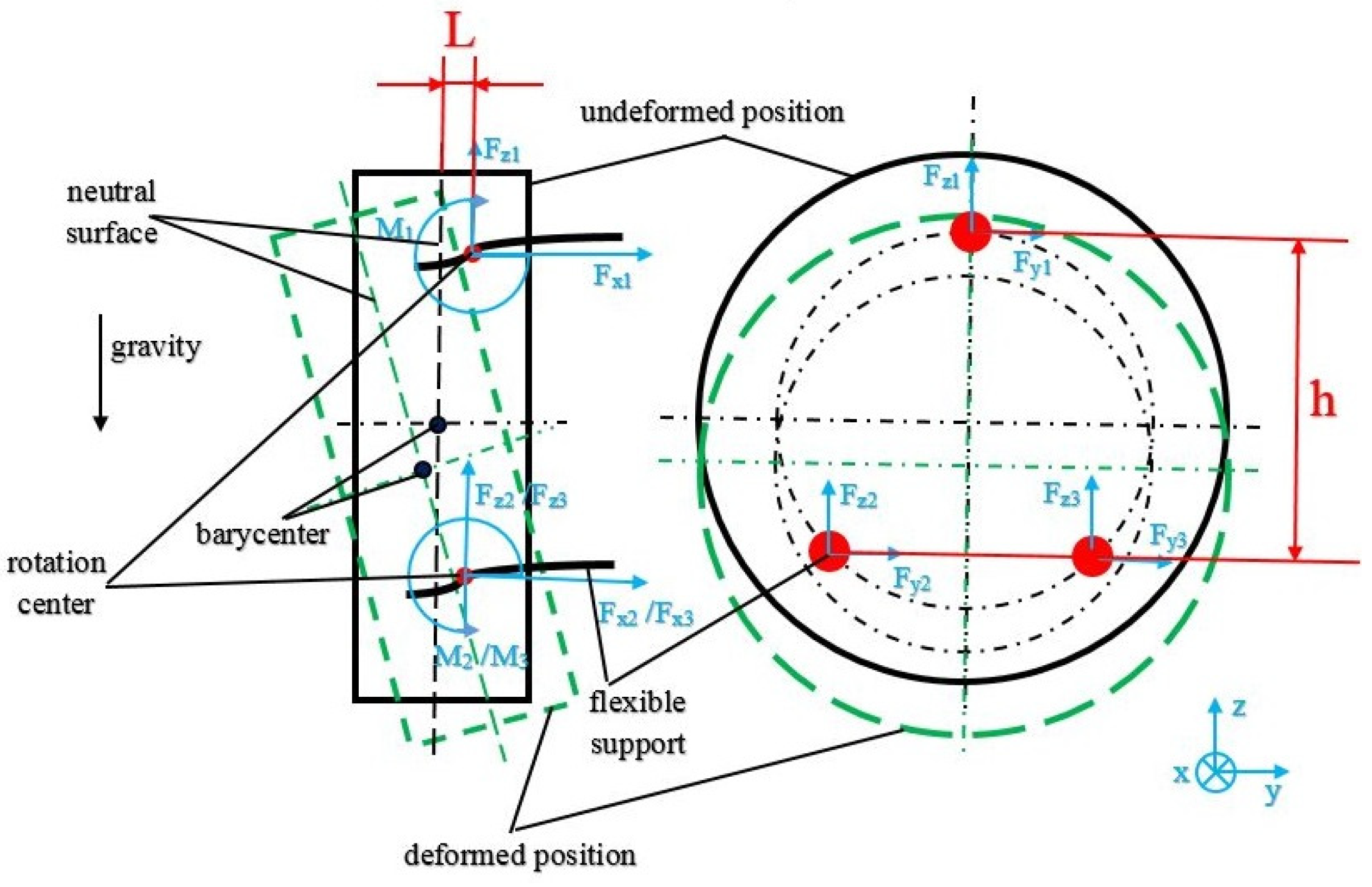
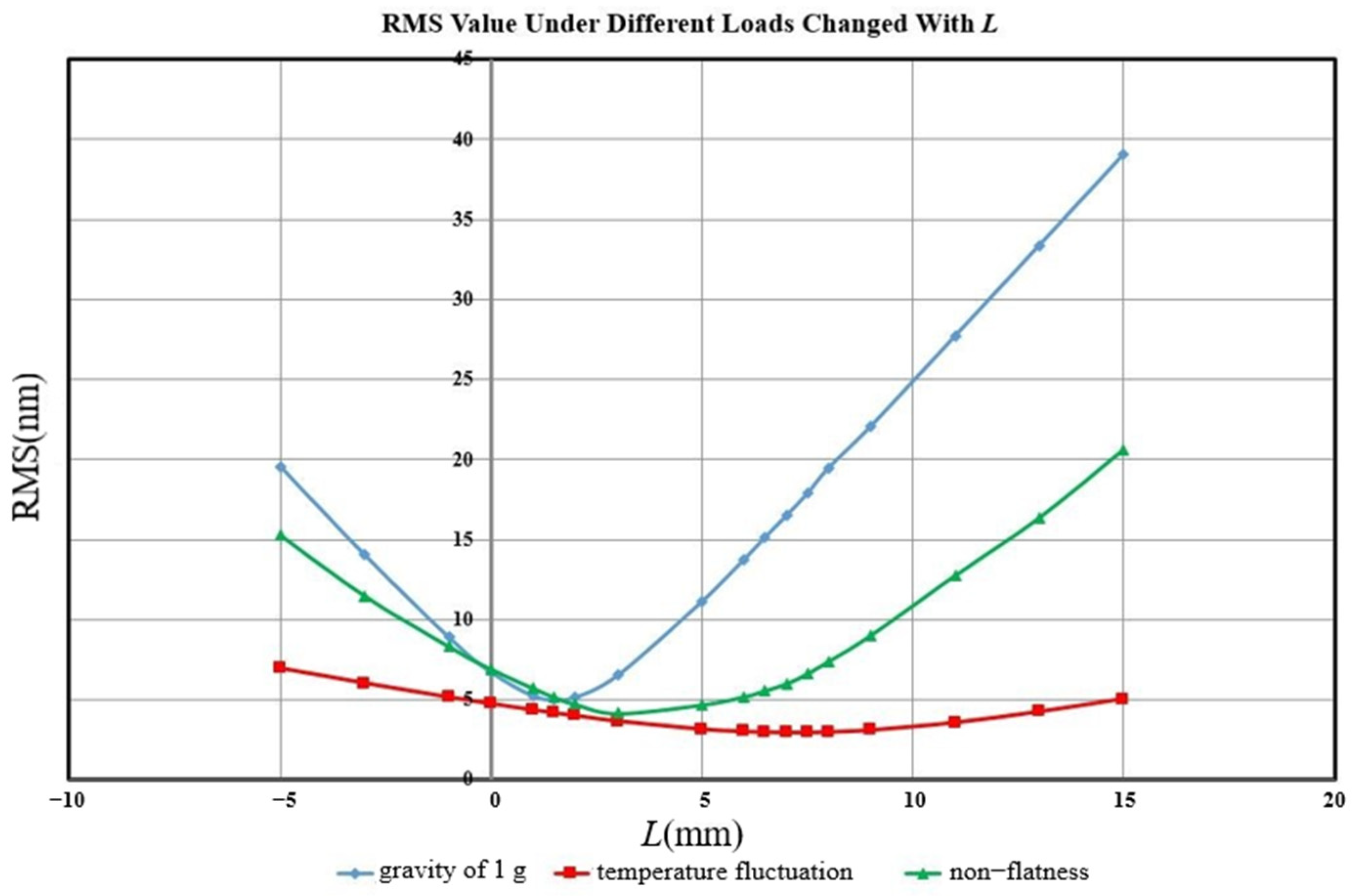
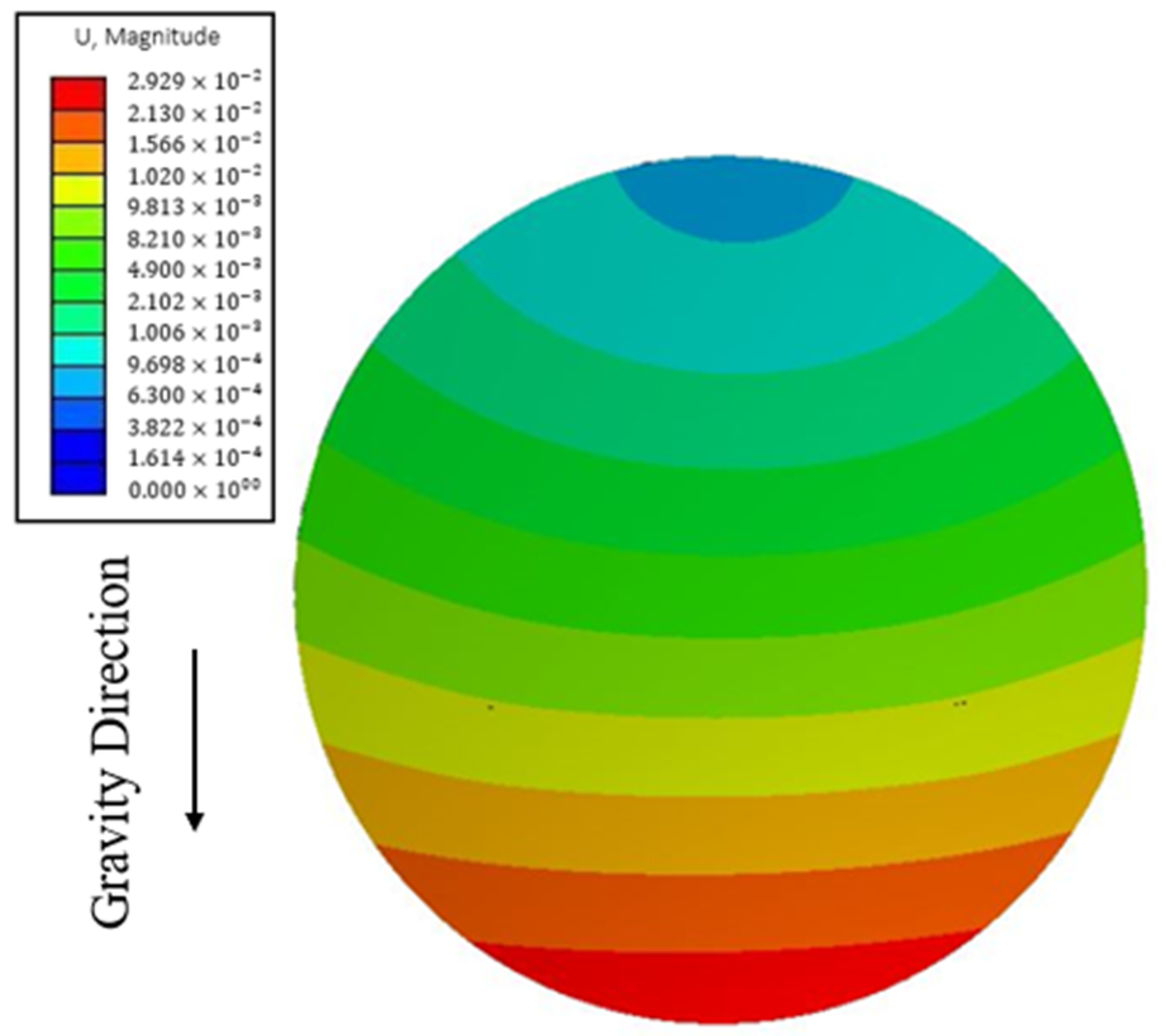

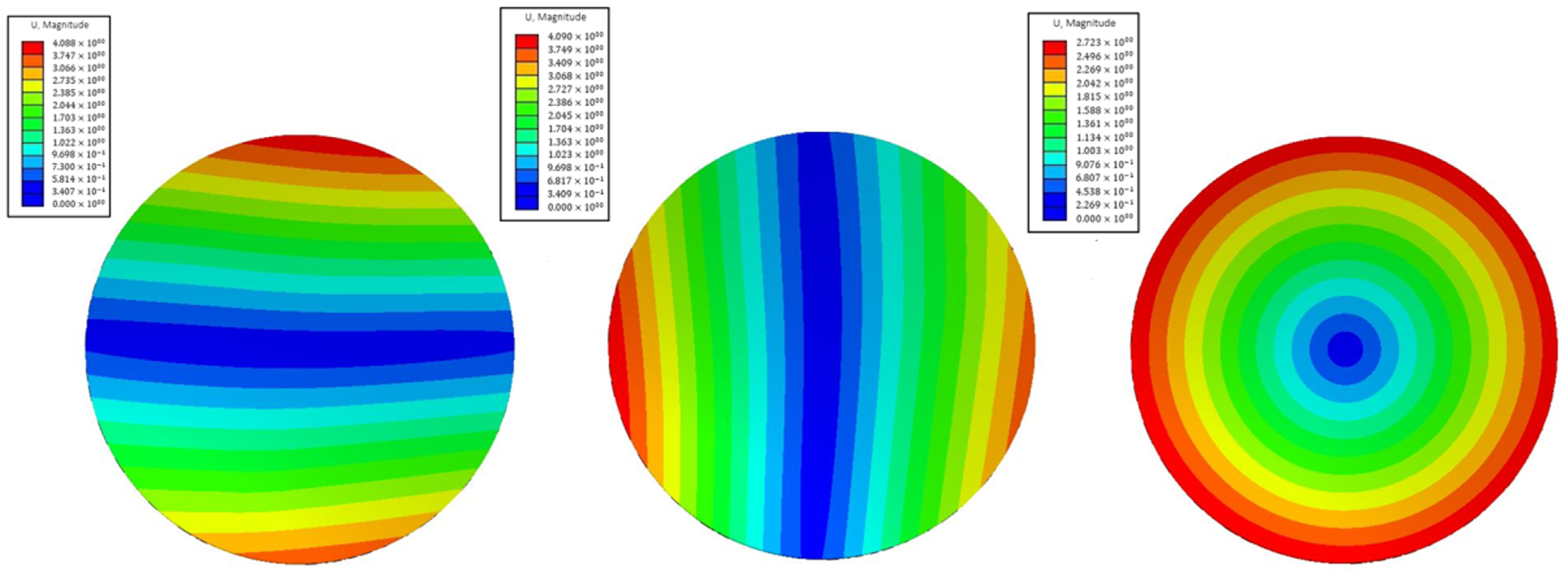
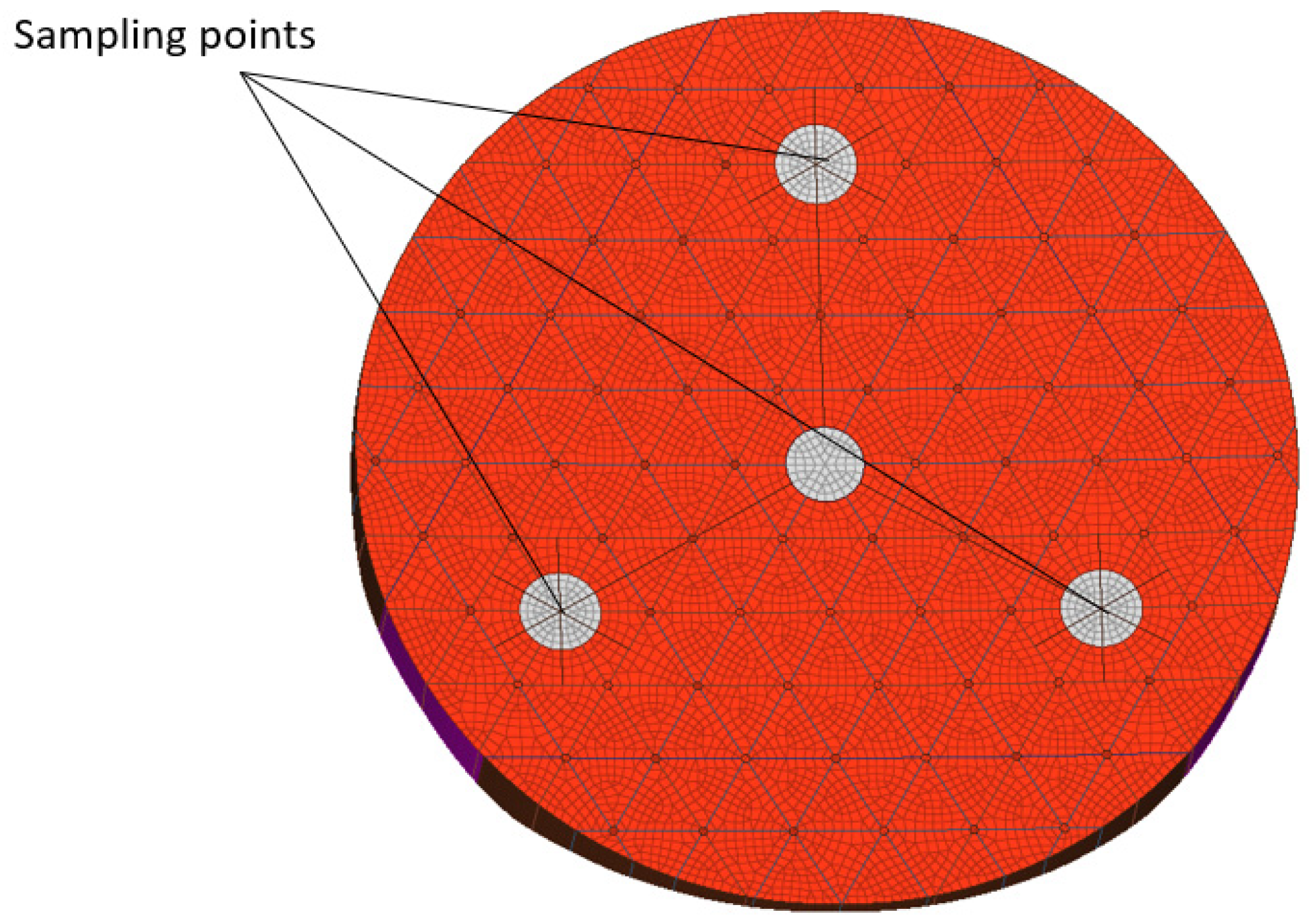
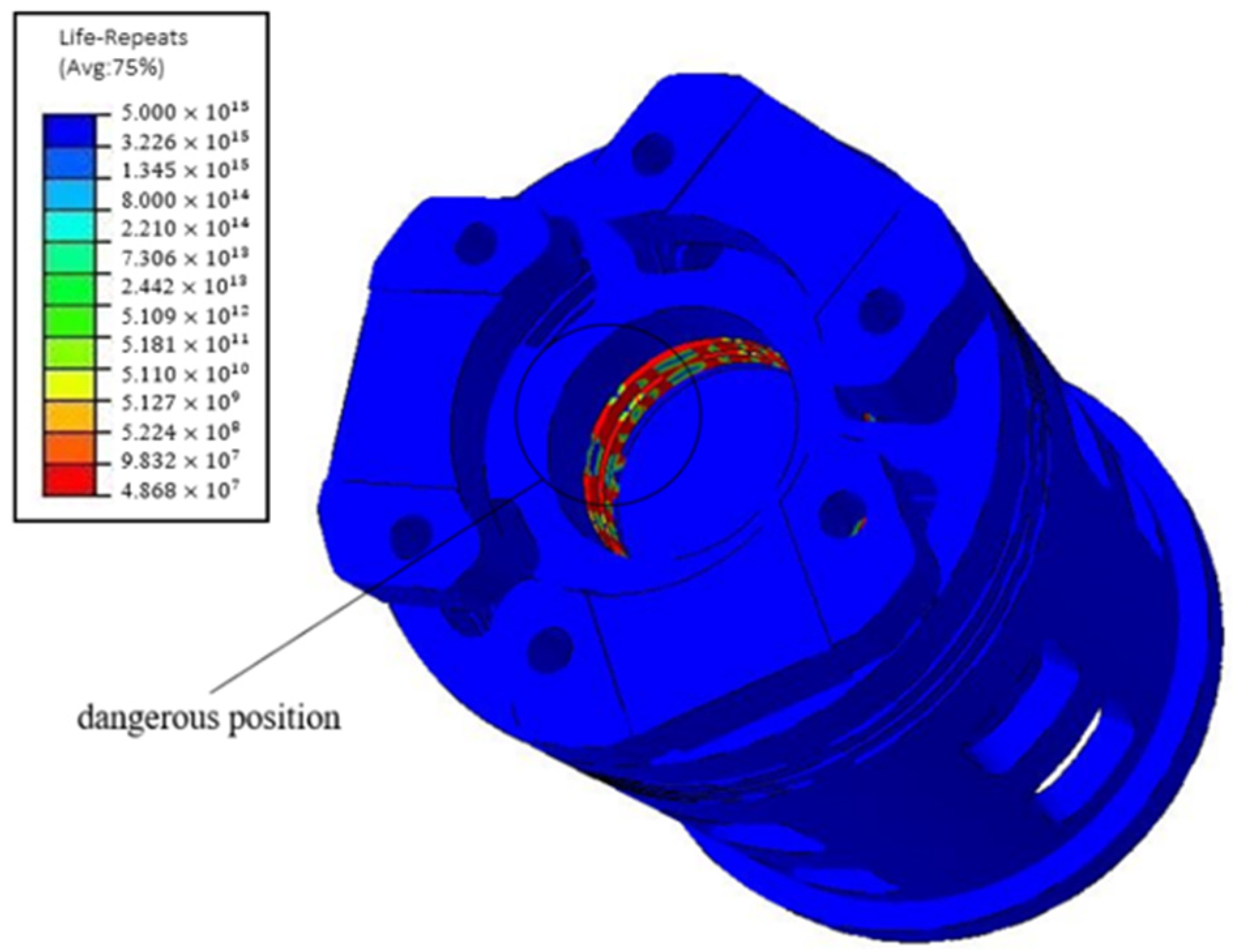
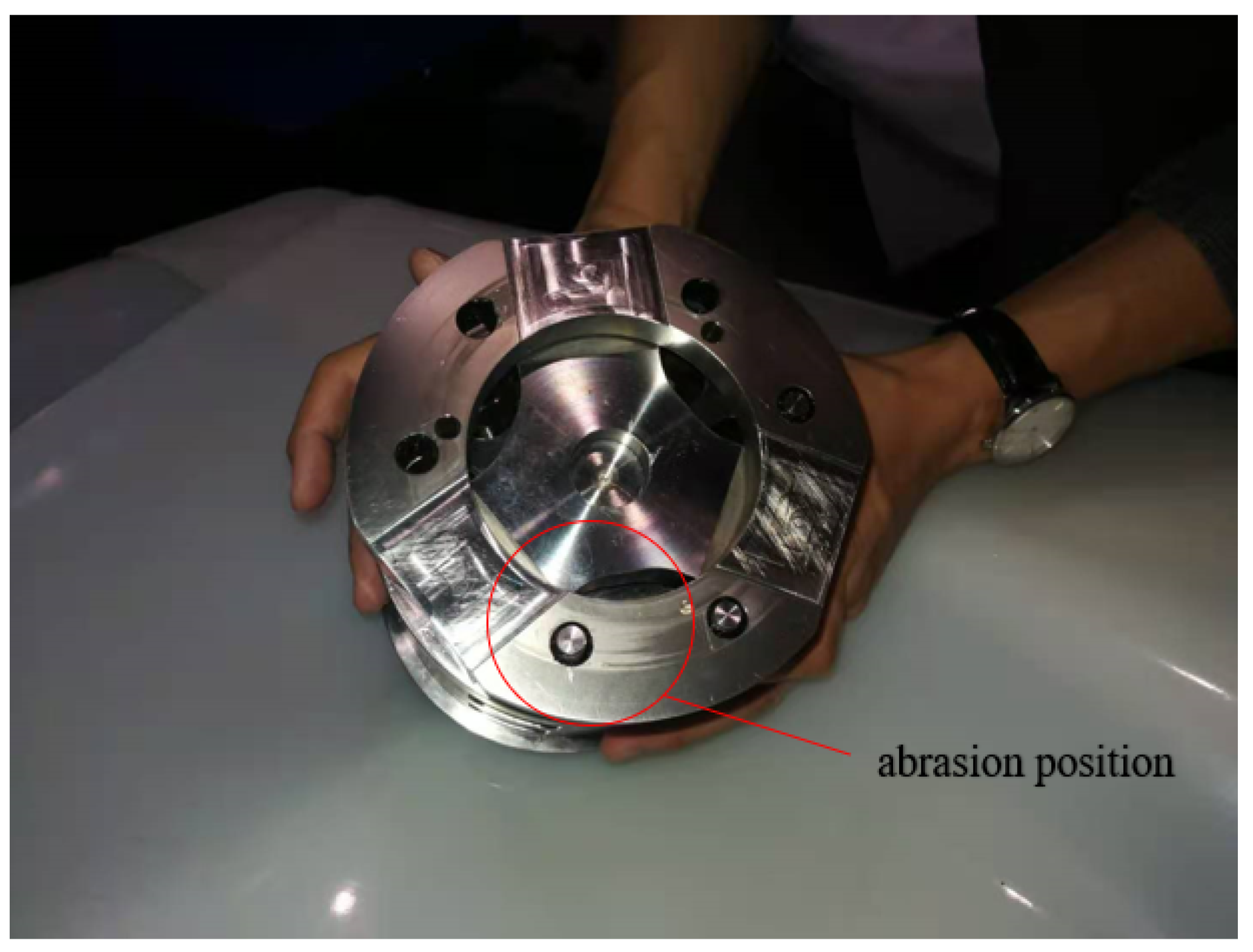




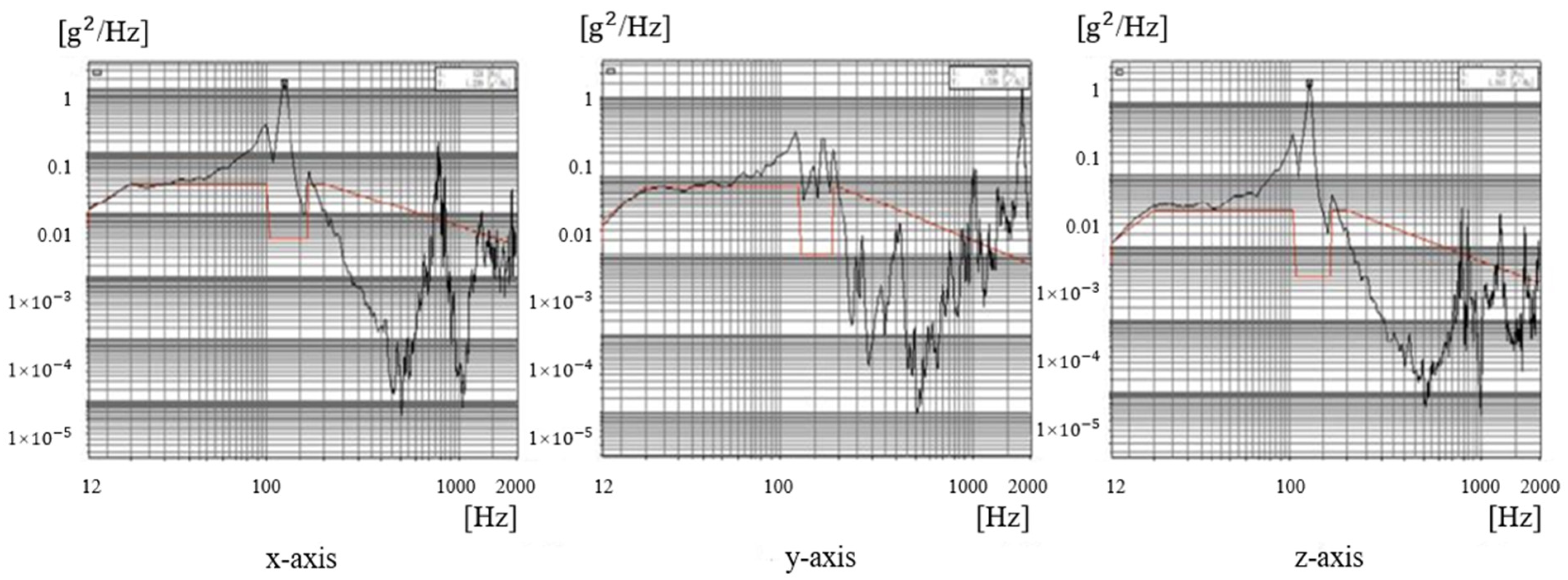
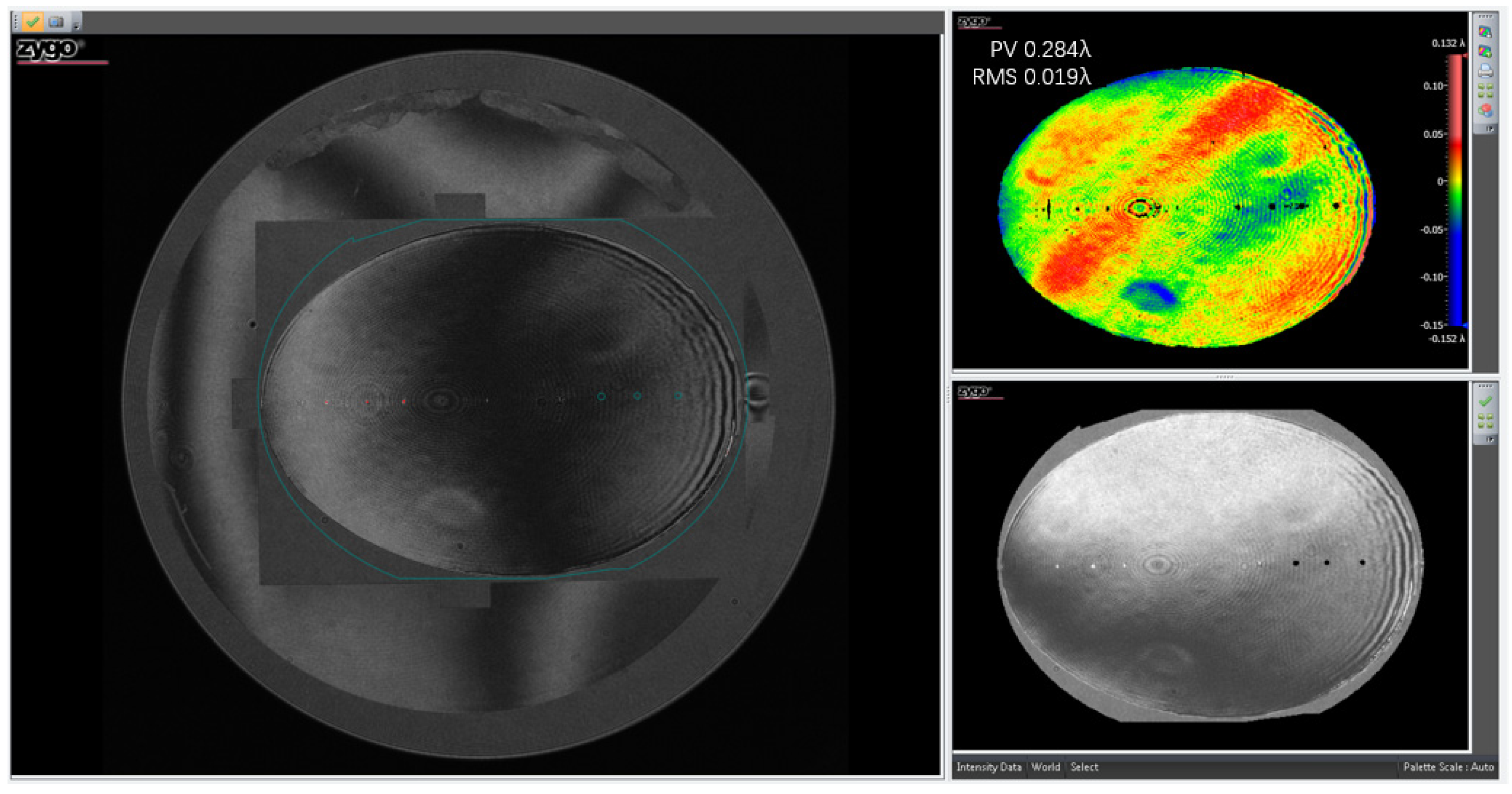
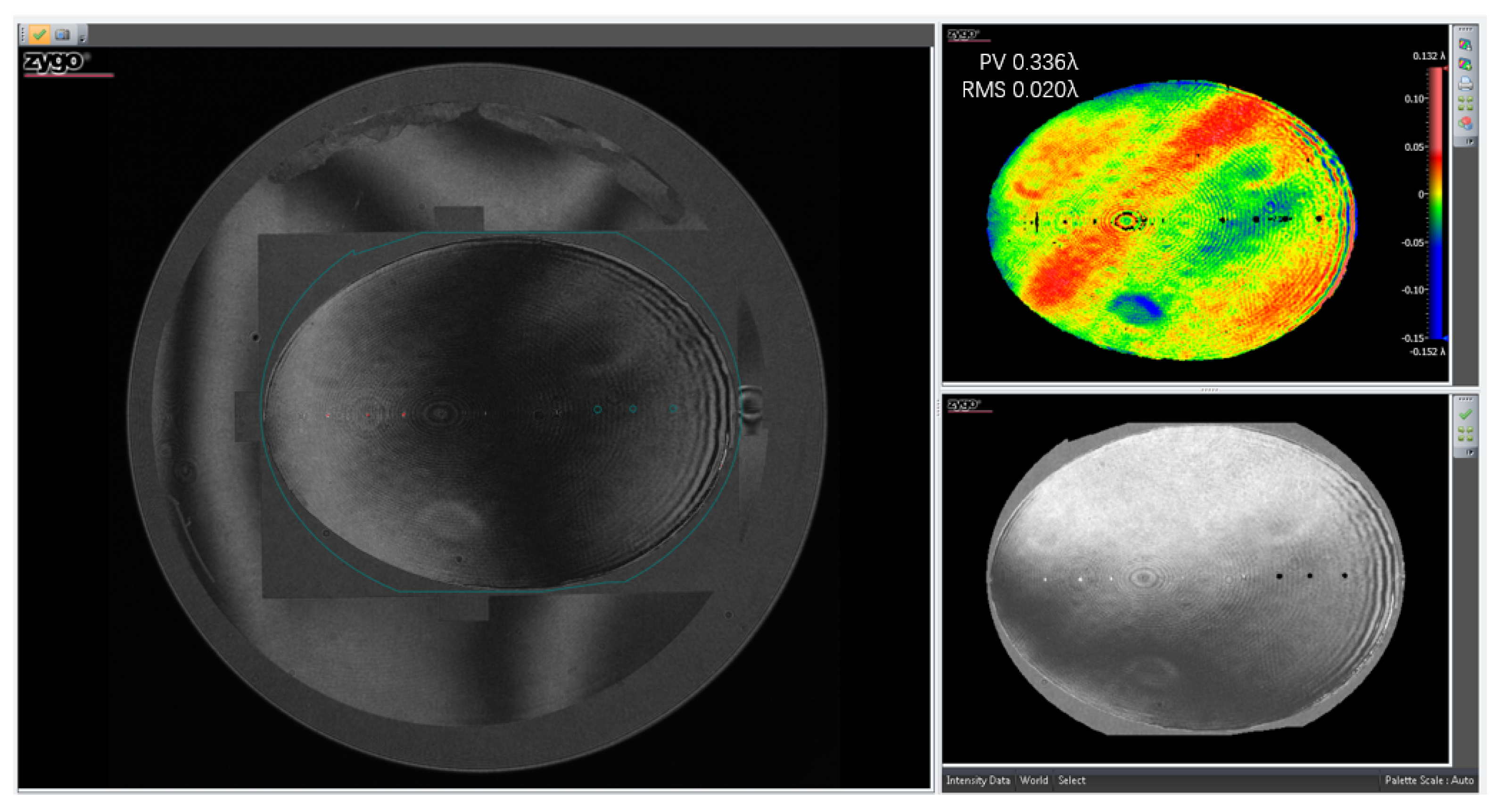
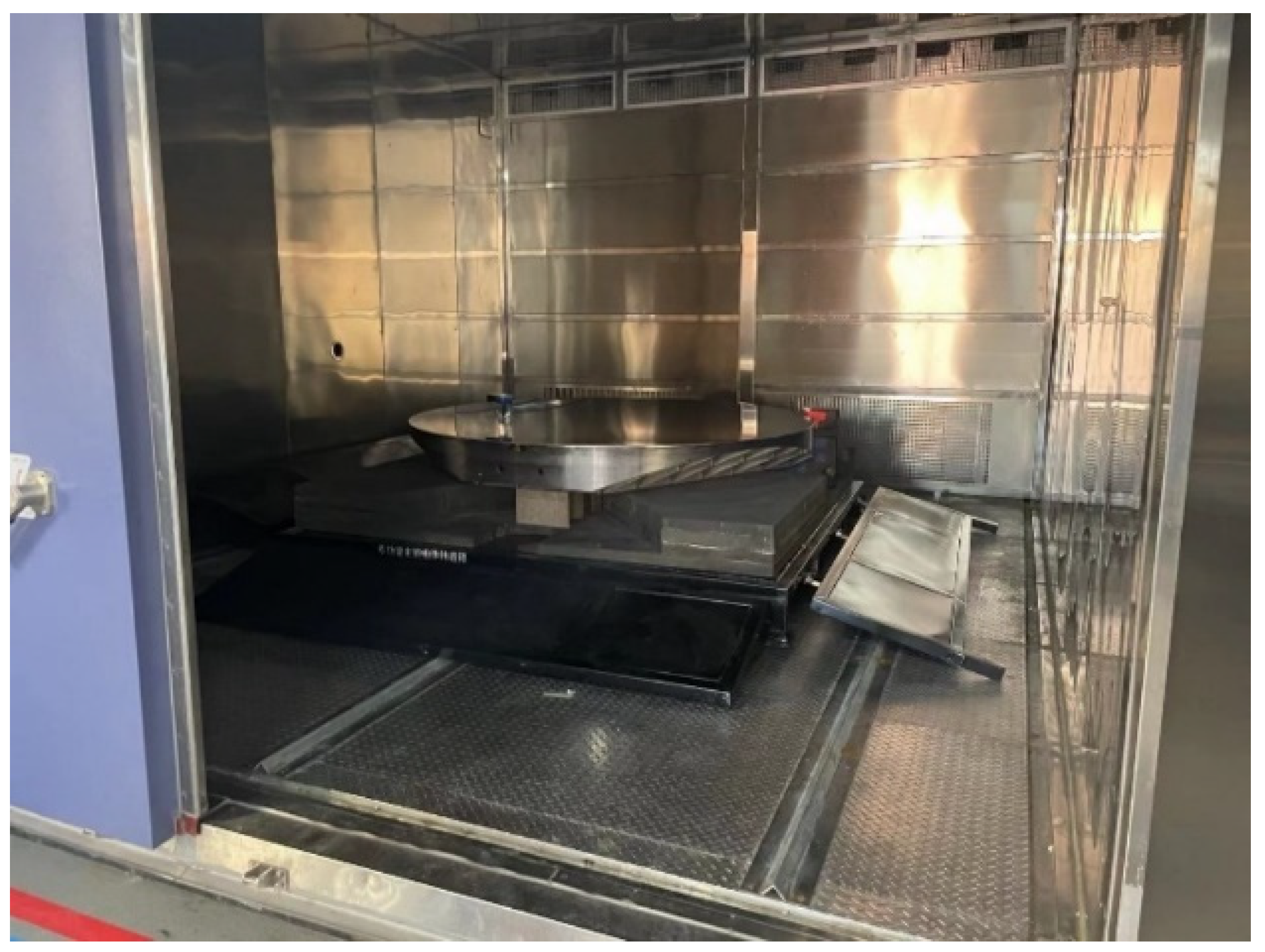

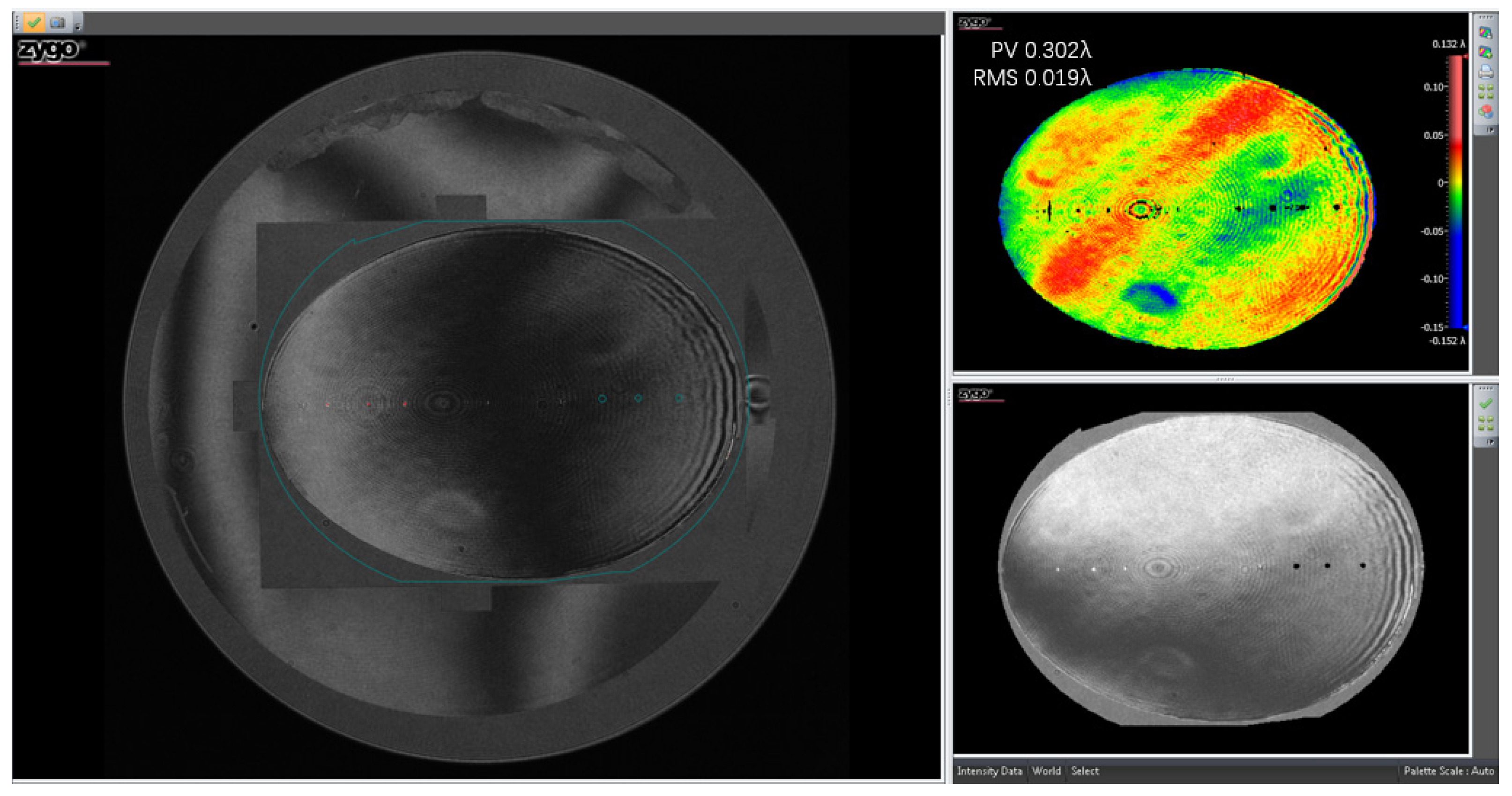
| Component | Quantity | Material | Elements | Nodes | Card Image |
|---|---|---|---|---|---|
| Mirror | 1 | SiC | 156,476 | 141,724 | PSHELL |
| Rigid connector | 3 | 4J32 | 39,932 | 30,810 | PSOLID |
| Flexible support | 3 | TC17 | 62,994 | 46,542 | PSOLID |
| Test tooling | 1 | Al | 128,341 | 95,566 | PSHELL |
| Total | 387,743 | 314,642 |
| Conditions | PV Value (nm) | RMS Value (nm) | Displacement (mm) | Inclination Angle (″) |
|---|---|---|---|---|
| Results | Results | Results | Results | |
| Gravity of 1 g | 51.6 | 5.01 | 3.7 | 1.5 |
| Temperature fluctuation | 22.1 | 4.16 | —— | —— |
| Non-flatness error | 21.65 | 5.17 | —— | —— |
| Composite load | 49.68 | 5.6 | 5 | 2 |
| Direction | x-axis | y-axis | z-axis | |||
|---|---|---|---|---|---|---|
| Frequency (Hz) | Magnitude | Frequency (Hz) | Magnitude | Frequency (Hz) | Magnitude | |
| Parameters | 5–10 | 13.8 mm | 4–9 | 1.48 g | 4–9 | 1.48 g |
| 10–15 | 5.5 g | 9–31 | 7.5 g | 9–31 | 7.5 g | |
| 15–31 | 7.5 g | 31–80 | 4 g | 31–80 | 4 g | |
| 31–80 | 5.5 g | 80–100 | 2.5 | 80–100 | 2.5 g | |
| 80–100 | 2.8 g | |||||
| Scan frequency | 2 oct/min | |||||
| Direction | x-axis | y-axis | z-axis | |||
|---|---|---|---|---|---|---|
| Frequency (Hz) | Magnitude | Frequency (Hz) | Magnitude | Frequency (Hz) | Magnitude | |
| Parameters | 10–20 | +6 dB/oct | 10–20 | +6 dB/oct | 10–20 | +6 dB/oct |
| 20–125 | 0.075 g2/Hz | 20–105 | 0.0315 g2/Hz | 20–105 | 0.0315 g2/Hz | |
| 125–185 | 0.01 g2/Hz | 105–165 | 0.004 g2/Hz | 105–165 | 0.004 g2/Hz | |
| 185–200 | 0.075 g2/Hz | 165–200 | 0.0315 g2/Hz | 165–200 | 0.0315 g2/Hz | |
| 200–2000 | −3 dB/oct | 200–2000 | −3 dB/oct | 200–2000 | −3 dB/oct | |
| Total RMS acceleration | 6.69 g | 4.33 g | 4.33 g | |||
| Testing time | 2 min | |||||
| Direction | Acceleration Response Amplification (Test) | Acceleration Response Amplification (Simulation) | Relative Error |
|---|---|---|---|
| x | 23.57 | 23.93 | 1.53% |
| y | 23.92 | 23.41 | 2.13% |
| z | 30.76 | 32 | 4.03% |
| Direction | RMS Acceleration Amplification (Test) | RMS Acceleration Amplification (Simulation) | Relative Error |
|---|---|---|---|
| x | 1.44 | 1.34 | 6.94% |
| y | 1.62 | 1.69 | 4.32% |
| z | 1.86 | 1.82 | 2.15% |
| Project | Direction | Maxmum Stress Response (Test) | Maxmum Stress Response (Simulation) | Relative Error |
|---|---|---|---|---|
| Sine vibration | x | 102.1 MPa | 95 MPa | 6.95% |
| y | 107.4 MPa | 114 MPa | 6.15% | |
| z | 119.7 MPa | 126 MPa | 5.26% | |
| Random vibration | x | 176 MPa | 185 MPa | 5.11% |
| y | 241 MPa | 253 MPa | 4.98% | |
| z | 279 MPa | 296 MPa | 6.09% |
Publisher’s Note: MDPI stays neutral with regard to jurisdictional claims in published maps and institutional affiliations. |
© 2022 by the authors. Licensee MDPI, Basel, Switzerland. This article is an open access article distributed under the terms and conditions of the Creative Commons Attribution (CC BY) license (https://creativecommons.org/licenses/by/4.0/).
Share and Cite
Xu, J.; Li, W.; Wang, K.; Hao, Q.; Lin, G. Design of a 2 m Primary Mirror Assembly Considering Fatigue Characteristics. Appl. Sci. 2022, 12, 10326. https://doi.org/10.3390/app122010326
Xu J, Li W, Wang K, Hao Q, Lin G. Design of a 2 m Primary Mirror Assembly Considering Fatigue Characteristics. Applied Sciences. 2022; 12(20):10326. https://doi.org/10.3390/app122010326
Chicago/Turabian StyleXu, Jiakun, Wei Li, Kejun Wang, Qu Hao, and Guanyu Lin. 2022. "Design of a 2 m Primary Mirror Assembly Considering Fatigue Characteristics" Applied Sciences 12, no. 20: 10326. https://doi.org/10.3390/app122010326





